TCP (Transmission Control Protocol)
TCP (Transmission Control Protocol) is a transport-layer protocol, responsible for establish a connection between two machines.
TCP consists of 2 protocols: TCP and UDP (User Datagram Package). TCP is reliable, each packet has a sequence number, and an acknowledgement is expected. A packet will be re-transmitted if it is not received by the receiver. Packet delivery is guaranteed in TCP. UDP does not guarantee packet delivery, and is therefore not reliable. However, UDP has less network overhead and can be used for applications such as video and audio streaming, where reliability is not critical.
Port 80 is HTTP default port number. HTTP can use other port number (1024-65535) such as 8000, 8080, especially for test server. You could also run multiple HTTP servers in the same machine on different port numbers. You need to explicitly specify the port number in the URL, e.g.http://www.nowhere123.com:8000/docs/index.htmlif the server is listening at port 8000 and not the default port 80.
In brief, to communicate over TCP/IP, you need to know (a) IP address or hostname, (b) Port number.
TCP/IP three-way handshake(establish TCP connection). This is a three step process where the client and the server exchange SYN(synchronize) and ACK(acknowledge) messages to establish a connection.
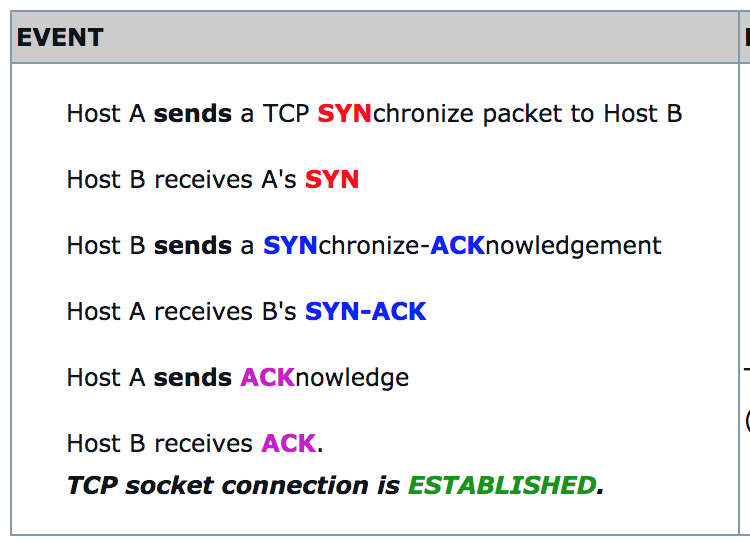
Client machine sends a SYN packet to the server over the internet asking if it is open for new connections.
If the server has open ports that can accept and initiate new connections, it’ll respond with an ACKnowledgment of the SYN packet using a SYN/ACK packet.
The client will receive the SYN/ACK packet from the server and will acknowledge it by sending an ACK packet.
Then a TCP connection is established for data transmission!
TCP Header
The Transmission Control Protocol (TCP) header is the first 24 bytes of a TCP segment that contains the parameters and state of an end-to-end TCP socket. The TCP header is used to track the state of communication between two TCP endpoints.
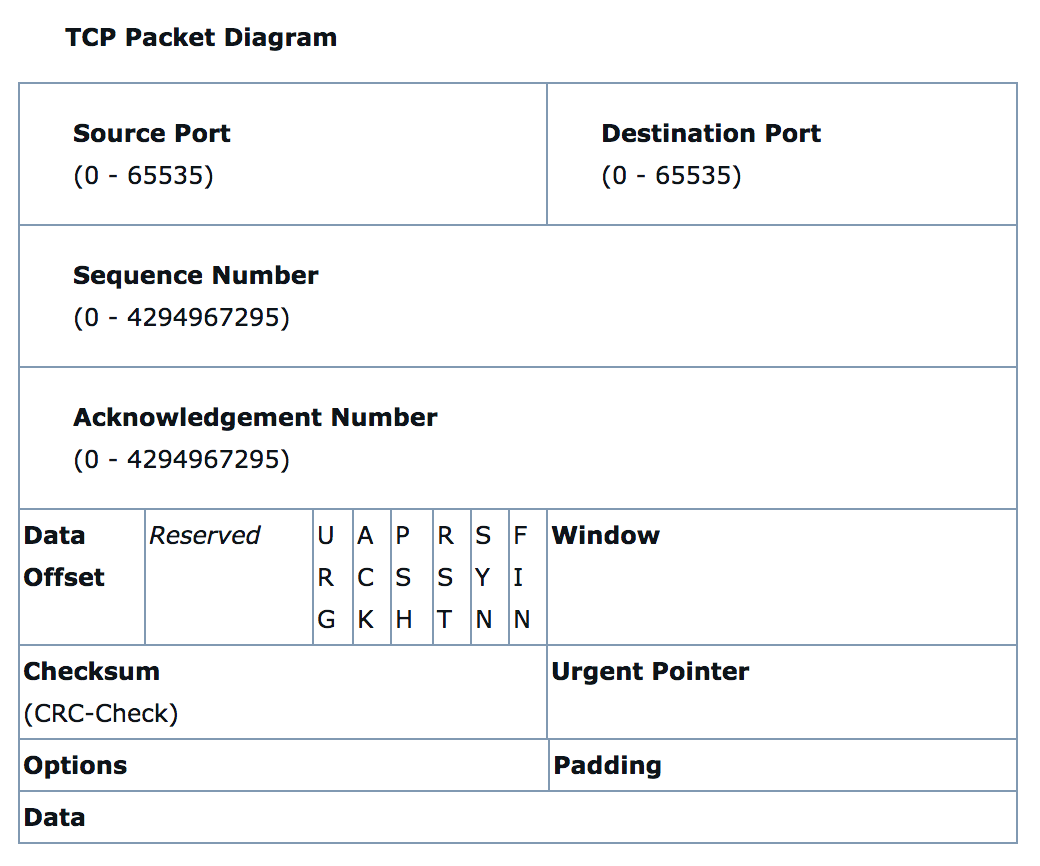 ACK: Acknowledgement Flag
ACK: Acknowledgement Flag
SYN: Synchronize Flag,
FIN: End of data, Indicates end of the TCP session
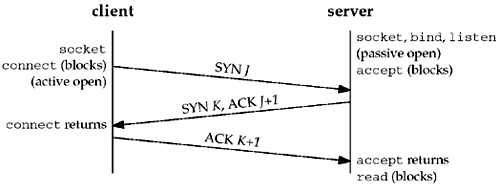
Establish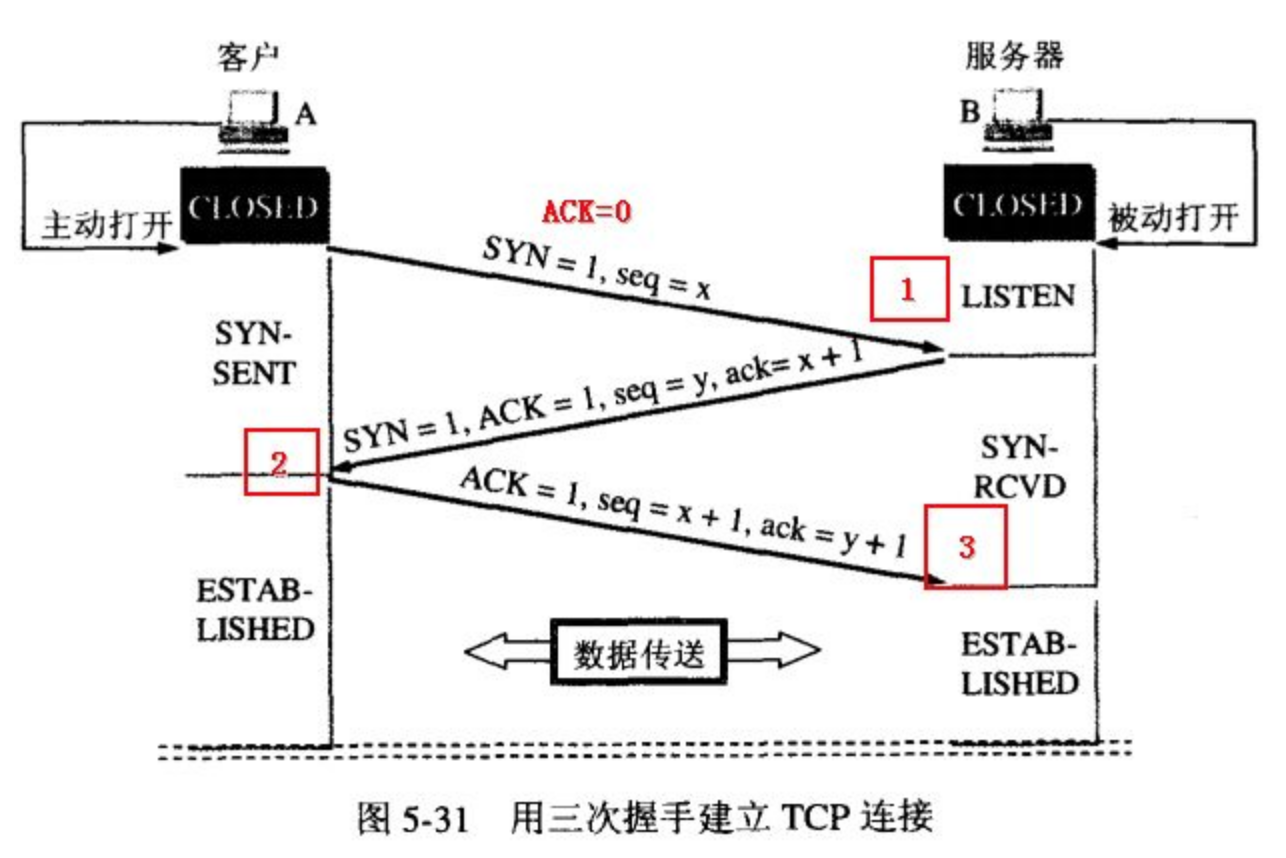
Why 3-way?
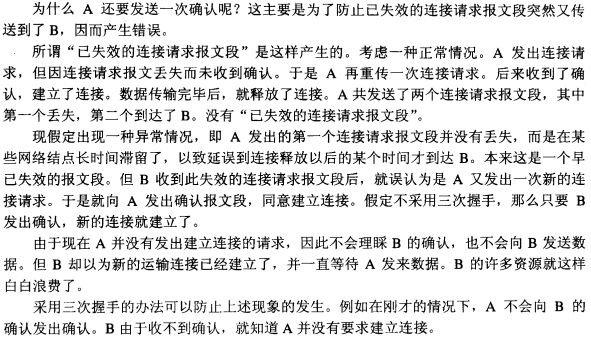
Release
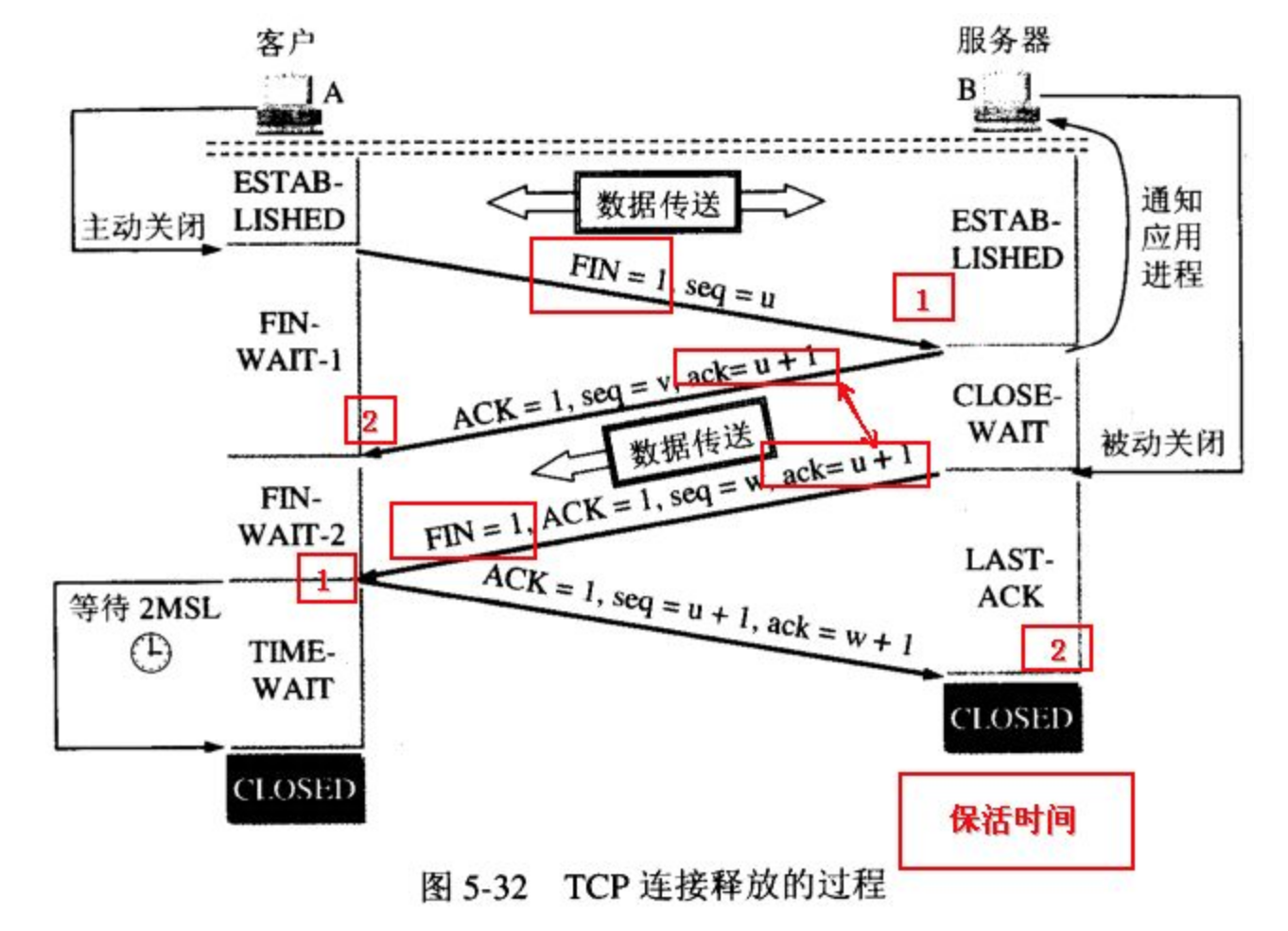 当客户A 没有东西要发送时就要释放 A 这边的连接,A会发送一个报文(没有数据),其中 FIN 设置为1, 服务器B收到后会给应用程序一个信,这时A那边的连接已经关闭,即A不再发送信息(但仍可接收信息)。 A收到B的确认后进入等待状态,等待B请求释放连接, B数据发送完成后就向A请求连接释放,也是用FIN=1 表示, 并且用 ack = u+1(如图), A收到后回复一个确认信息,并进入 TIME_WAIT 状态, 等待 2MSL 时间。
当客户A 没有东西要发送时就要释放 A 这边的连接,A会发送一个报文(没有数据),其中 FIN 设置为1, 服务器B收到后会给应用程序一个信,这时A那边的连接已经关闭,即A不再发送信息(但仍可接收信息)。 A收到B的确认后进入等待状态,等待B请求释放连接, B数据发送完成后就向A请求连接释放,也是用FIN=1 表示, 并且用 ack = u+1(如图), A收到后回复一个确认信息,并进入 TIME_WAIT 状态, 等待 2MSL 时间。
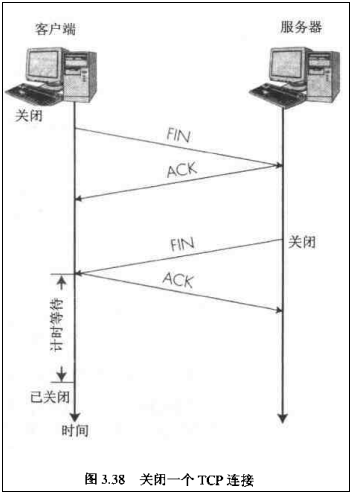
【注意】中断连接端可以是Client端,也可以是Server端。
假设Client端发起中断连接请求,也就是发送FIN报文。Server端接到FIN报文后,意思是说"我Client端没有数据要发给你了",但是如果你还有数据没有发送完成,则不必急着关闭Socket,可以继续发送数据。所以你先发送ACK,"告诉Client端,你的请求我收到了,但是我还没准备好,请继续你等我的消息"。这个时候Client端就进入FIN_WAIT状态,继续等待Server端的FIN报文。当Server端确定数据已发送完成,则向Client端发送FIN报文,"告诉Client端,好了,我这边数据发完了,准备好关闭连接了"。Client端收到FIN报文后,"就知道可以关闭连接了,但是他还是不相信网络,怕Server端不知道要关闭,所以发送ACK后进入TIME_WAIT状态,如果Server端没有收到ACK则可以重传。“,Server端收到ACK后,"就知道可以断开连接了"。Client端等待了2MSL后依然没有收到回复,则证明Server端已正常关闭,那好,我Client端也可以关闭连接了。Ok,TCP连接就这样关闭了!
整个过程Client端所经历的状态如下:
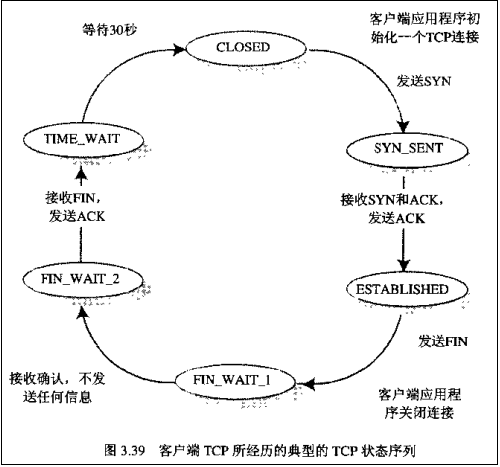
而Server端所经历的过程如下:转载请注明:blog.csdn.net/whuslei

【注意】在TIME_WAIT状态中,如果TCP client端最后一次发送的ACK丢失了,它将重新发送。TIME_WAIT状态中所需要的时间是依赖于实现方法的。典型的值为30秒、1分钟和2分钟。等待之后连接正式关闭,并且所有的资源(包括端口号)都被释放。
【问题1】为什么连接的时候是三次握手,关闭的时候却是四次握手?
答:因为当Server端收到Client端的SYN连接请求报文后,可以直接发送SYN+ACK报文。其中ACK报文是用来应答的,SYN报文是用来同步的。但是关闭连接时,当Server端收到FIN报文时,很可能并不会立即关闭SOCKET,所以只能先回复一个ACK报文,告诉Client端,"你发的FIN报文我收到了"。只有等到我Server端所有的报文都发送完了,我才能发送FIN报文,因此不能一起发送。故需要四步握手。
【问题2】为什么TIME_WAIT状态需要经过2MSL(最大报文段生存时间)才能返回到CLOSE状态?
答:虽然按道理,四个报文都发送完毕,我们可以直接进入CLOSE状态了,但是我们必须假象网络是不可靠的,有可以最后一个ACK丢失。所以TIME_WAIT状态就是用来重发可能丢失的ACK报文。